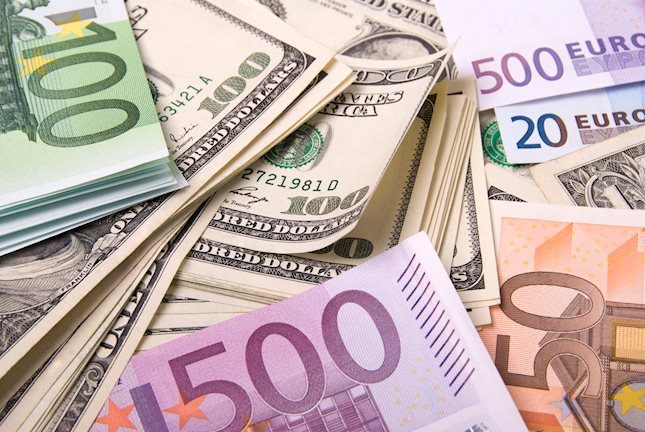The Manager of QE-1 Agrees that the Fed Has Lost Perspective
Here we are, almost six years from the financial crisis of 2008 and yet the Federal Reserve is still printing money--Quantitative Easing (QE). At the beginning, it was explained that these policies were necessary to stop us from going into another “great depression” (after entering the “great recession”). That was with QE-1 starting in late 2008, and QE-2 starting in November 2010 until June 2011. With the start of QE-3, the Fed did not use any time limit which started the description “QE-3 to Infinity”. The latest “QE-3 to Infinity” starting in September of 2012 was also driven by much larger purchases of bonds. Under this QE the Fed purchased $45 bn. /month of Treasury securities, $40 bn. /month of mortgage-backed securities, while keeping the Fed Funds at a range of zero % to .25%. This strategy was used by the Fed to create a “wealth effect” so consumers felt wealthier as asset prices rose. They expected this “wealth effect” to help stimulate the economy. Presently, the Fed has decided they want to stop QE-3 since their balance sheet skyrocketed from $800 billion (bn.) to $4.3 trillion (tn.) as the S&P 500 rose close to 300%.
Here’s the problem. The hope of the Fed has been that the economy would improve to such a point that stimulation would no longer be necessary. But, although there has been some improvement, many important sectors such as capital expenditures, strong growth in well-paying jobs, housing, and retail sales, have all been disappointing, which accounted for a negative GDP in the 1st quarter, and probably will stay with a 2 handle for the year.
The Fed has tried to stop QE strategies before but were unsuccessful. During the first two QE programs, they set a date when the programs would end. Once those dates were announced, the markets began to unravel which resulted in the Fed starting another QE. They essentially had to start a new QE in order to keep the “wealth effect” alive. Apparently, they noticed that stopping their programs at a specific date was not working, so they came up with the idea of getting out gradually (“tapering”) as if no one will notice and everything will go back to normal.
Our hope is that the “tapering” actually works and the Fed will no longer meddle in the markets, but realistically, how can it end differently this time? After all, the Fed has never had to taper bond purchases or raise interest rates with a balance sheet of over $4.3 tn. As the Fed continues to taper the bond purchases, it will eventually strike a nerve in the capital markets just like the earlier programs. And if not, it will definitely strike a nerve when they decide to raise interest rates. They may decide to try other techniques before they raise interest rates, like pay interest on bank reserves, issue Certificates of Deposits for excess reserves, or “repo” bank securities by giving the banks securities while they pay the Fed cash.
However, we believe the market will correct significantly before the Fed ends the tapering of the bond purchases and this will result in a delay of further tapering and maybe even reverse the tapering and actually increase the amount of bond purchases made each month. What will be interesting is how the markets handle it. Will investors continue to believe the Fed will bail the markets out again by buying more bonds? And will investors go back to the buying of risky assets on the news of more QE purchases or will they start losing confidence in these policies? Eventually, we believe it will be the latter.
The Manager of QE-1 Agrees that the Fed has Lost Perspective
Andrew Huszar is a senior fellow at Rutgers Business School and was the former manager of the Fed’s $1.25 tn. Agency mortgage-backed security purchase program (QE-1). In an interview recently Andrew questioned the enormous build- up of the Fed’s balance sheet. He stated, “You can’t spend $4 tn. in the financial markets and not see benefits. First of all, I should say that while I feel the Fed has lost perspective, I believe the people working there are smart, well intentioned people. I just don’t believe it flies, and whatever benefit you get from this program is being outweighed dramatically by the negative distortions that QE is creating. There’s the question of how the Fed unwinds its unprecedented operational expansion. This is an unwinding that will have to be invented on the fly, and it could have huge downside risks for the U.S. economy. Note that even the Fed’s suggestion of a minor taper this summer led to the beginning of a substantial stock market selloff. What if the Fed ever has to sell off bonds? You can imagine far greater risk and volatility in the markets. The longer the Fed waits, the greater the risk gets.”
The materials in this website are not an offer to sell or solicitation of an offer to buy any security , nor shall any such security be offered or sold to any person, in any jurisdiction in which such offer, solicitation, purchase, or sale would be unlawful under the securities laws of such jurisdiction. Please call 1-800-GABELLI (1-800-422-3554) or your Advisor for a free prospectus for the Comstock Funds, which contains more complete information on the Funds, including management fees, charges and expenses. Please read it carefully before investing or sending money. © 2002 Comstock Partners, Inc. All rights reserved.
Recommended Content
Editors’ Picks

EUR/USD clings to daily gains near 1.0300 after US PMI data
EUR/USD trades in positive territory at around 1.0300 on Friday. The pair breathes a sigh of relief as the US Dollar rally stalls, even as markets stay cautious amid geopolitical risks and Trump's tariff plans. US ISM PMI improved to 49.3 in December, beating expectations.

GBP/USD holds around 1.2400 as the mood improves
GBP/USD preserves its recovery momentum and trades around 1.2400 in the American session on Friday. A broad pullback in the US Dollar allows the pair to find some respite after losing over 1% on Thursday. A better mood limits US Dollar gains.

Gold retreats below $2,650 in quiet end to the week
Gold shed some ground on Friday after rising more than 1% on Thursday. The benchmark 10-year US Treasury bond yield trimmed pre-opening losses and stands at around 4.57%, undermining demand for the bright metal. Market players await next week's first-tier data.

Stellar bulls aim for double-digit rally ahead
Stellar extends its gains, trading above $0.45 on Friday after rallying more than 32% this week. On-chain data indicates further rally as XLM’s Open Interest and Total Value Locked rise. Additionally, the technical outlook suggests a rally continuation projection of further 40% gains.

Week ahead – US NFP to test the markets, Eurozone CPI data also in focus
King Dollar flexes its muscles ahead of Friday’s NFP. Eurozone flash CPI numbers awaited as euro bleeds. Canada’s jobs data to impact bets of a January BoC cut. Australia’s CPI and Japan’s wages also on tap.

Best Forex Brokers with Low Spreads
VERIFIED Low spreads are crucial for reducing trading costs. Explore top Forex brokers offering competitive spreads and high leverage. Compare options for EUR/USD, GBP/USD, USD/JPY, and Gold.